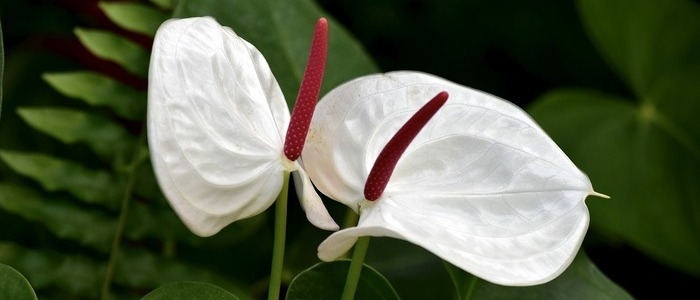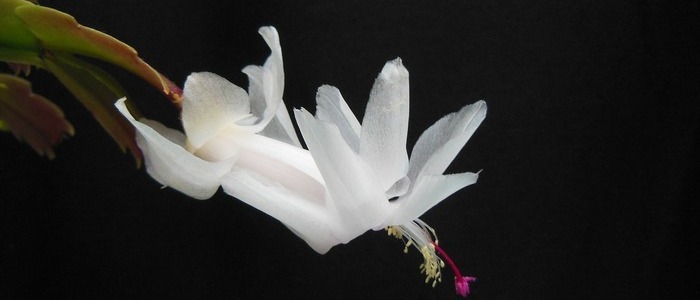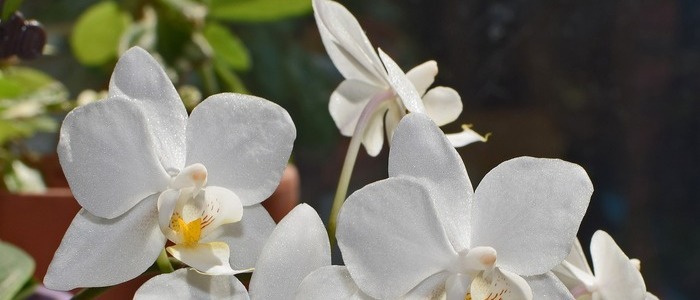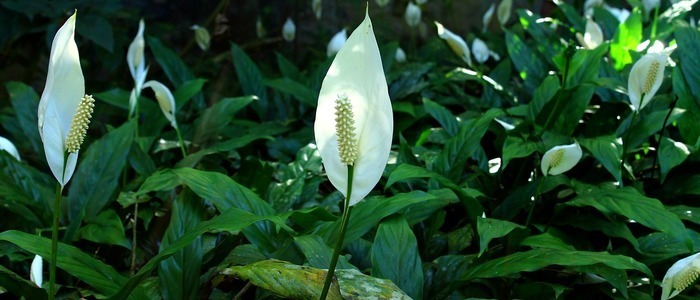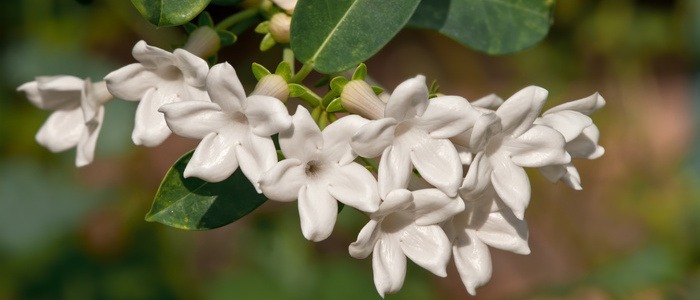Miniature white roses are some of the most beautiful and graceful plants to keep indoors, but they require special care in order to grow and bloom. These delicate flowers need to be placed in a location that receives ample sunlight, but not direct sunlight, as it can scorch their petals. Regular watering is essential to keep the soil moist, but overwatering can lead to root rot. Additionally, it is important to provide adequate air circulation to prevent the growth of fungal diseases.
This blog post will provide you with detailed information on how to best take care of your miniature white roses indoors, from prepping the soil and potting the plant, to watering regularly and protecting your roses from pests and diseases. With the right knowledge and dedication to tending your plant, you can ensure that your miniature white rose blooms beautifully for many years to come.

Miniature White Roses Frequently Asked Questions
What are the light requirements for roses grown indoors?
The light requirements for roses grown indoors are crucial for their growth and blooming. Roses need a minimum of six hours of direct sunlight each day to thrive. If you don't have access to enough natural light, you can use artificial grow lights specifically designed for plants. These lights should be positioned 12-18 inches above the roses and kept on for 12-16 hours a day to provide the necessary light intensity.
Are roses a popular houseplant?
Yes, roses are a popular houseplant choice for many gardening enthusiasts. Their beautiful blooms and pleasant fragrance make them a delightful addition to any indoor space. While they require proper care and attention, the reward of having vibrant roses indoors is worth the effort. With the right light conditions and regular maintenance, roses can thrive as houseplants and bring a touch of elegance to any room.
How to Grow Miniature White Roses Indoors
It’s important to take your time when prepping your miniature white roses for planting indoors. The right soil, pot size, drainage holes, and fertilizer can make all the difference in how well your roses grow and bloom. When choosing a potting soil for your miniature white roses, you should opt for one that is specially formulated for roses.
This type of soil will provide the best possible nutrition for your plants and will help ensure their growth and development. It’s also important to pick the right size pot when planting miniature white roses indoors – generally speaking, bigger is better! Make sure that you choose a pot with enough drainage holes (typically at least three) so that excess water doesn’t build up in the bottom of the pot and suffocate or rot your plant’s roots.
Once you’ve chosen a suitable pot with enough drainage holes for your rose plant, it’s recommended that you add a layer of gravel at the bottom of the pot before adding the soil. This will aid in drainage and protect the roots from sitting in too much moisture. Additionally, don’t forget to fertilize your miniature white roses when planting them as well as every few weeks during their growing season.
Fertilizing regularly will provide essential nutrients to ensure healthy growth and beautiful blooms throughout their life span. With these simple steps taken into consideration while prepping your miniature white rose plant, you can be sure it’s set up for success!
Watering Your Miniature White Roses
Watering your miniature white roses is an important part of keeping them healthy and ensuring beautiful blooms. Consistent watering is essential, as any fluctuation in moisture levels can cause the roots to become stressed and the leaves to dry out. Watering should be done regularly, but it’s also important not to overwater, as this can lead to root rot or other diseases.
The best time of day to water miniature white roses is early in the morning before the sun rises. This allows the plant to absorb adequate amounts of water before it begins photosynthesizing energy from sunlight. If you are unable to water every morning, try doing so every other day instead. Be sure not to let the soil dry out completely between waterings.
When it comes to what kind of water should be used for your miniature white roses, rainwater is always preferable over tap water if possible. Rainwater has no added chemicals or minerals that can damage delicate plants like roses or interfere with their growth cycles and development. Tap water may contain salts and chlorine that can harm plants over time, so use rainwater when available for best results.
Finally, be aware that overwatering your miniature white roses can be just as detrimental as underwatering them. Too much moisture will prevent oxygen from reaching the roots which will inevitably lead to root rot and other diseases that can kill a plant very quickly if left unchecked. Monitor moisture levels closely and adjust your watering schedule accordingly for optimum health of your miniature white rose plants.
Ideal Light Conditions for Miniature White Roses
Ideal Light Conditions for Miniature White Roses Miniature white roses can bring a touch of beauty and elegance to any indoor space. In order to get the best results with these delicate plants, it is important to provide them with ideal light conditions.
The best source of light for miniature white roses is bright, indirect sunlight. Placing your roses near a south or east facing window will give them access to plenty of bright natural light without exposing them to the harsh rays of direct sunlight, which can cause leaf burn and other damage. If natural light is not available, fluorescent bulbs can be used as a substitute. Just make sure that the bulbs are placed at least 8-12 inches away from the plants so that they do not get too much heat or light.
It’s also important not to let your miniature white roses get too much light. Too much sun exposure can cause leaves to yellow and fade, while too little sun exposure will mean less flowers and smaller blooms when they do appear. To ensure that your miniature white roses are getting just the right amount of light, monitor their growth patterns over time and adjust lighting accordingly if needed.
By providing your miniature white roses with bright but indirect sunlight you’ll be able to enjoy beautiful blooms all year round with minimal effort on your part!
Fertilizing your Miniature White Roses
Fertilizing your miniature white roses is an essential part of their overall health and growth. A balanced, slow-release fertilizer with an N-P-K ratio of 10-10-10 should be used to ensure that your roses get the necessary nutrients for healthy growth. Fertilizing once every two weeks during the growing season and once a month during the winter will help keep your plants thriving.
However, it is important to not overfertilize as this can cause nutrient burn in the plant which can damage or even kill them. Additionally, too much fertilizer can attract pests, so being mindful of how much you are applying is key. Finally, always be sure to remove any residual fertilizer from around the base of your roses after you have fertilized them as this will help prevent issues like root rot.
With proper fertilization techniques, you can ensure beautiful blooms and a healthy rose plant all year round. If done correctly, fertilizing miniature white roses is relatively easy and doesn’t take up too much time or effort – making it an essential part of caring for these delicate flowers.
How to Propagate Miniature White Roses
Propagating miniature white roses is a great way to increase your collection of these beautiful flowers without having to purchase more plants or wait for seeds to sprout. While it may seem intimidating, propagating roses is relatively simple and can be done with just a few basic tools.
The most common method for propagating miniature white roses is dividing existing root systems. This process requires you to dig up the rose bush and separate the roots into two or more parts. Each part should have at least two sets of healthy foliage or buds on it before being replanted in its own pot with soil specifically designed for roses. It is important that you do not damage any of the delicate root systems when separating them, as this could negatively impact the health of your plants.
Another popular method for propagating miniature white roses is taking cuttings from stems with leaves attached. To take a cutting, use sterilized scissors or shears to snip away a stem that has at least two sets of leaves and buds on it. Dip the end of the stem in rooting hormone and then place it in moist soil. Cover the pot loosely with plastic wrap or newspaper until roots begin to form, which usually takes about three weeks. Once they have rooted sufficiently, transfer the cutting into its own pot with rose-specific soil and water it regularly so that it does not dry out completely.
Finally, another propagation technique that is commonly used for miniature white roses is layering tips of stems in moist soil. To start this method, select several stems with plenty of healthy foliage on them and bend them down so their tips are touching damp soil beneath them while keeping their upper portions above ground level. Secure each tip with U-shaped garden pins and cover them lightly with additional soil if necessary so they remain in contact with moisture but are still able to get enough light and oxygen exposure from aboveground level.
After several weeks have passed – usually around 6-8 weeks – small new shoots should appear near where each stem was bent down into the soil; once these grow large enough, sever them from their parent plant using sterile scissors or shears and repot them individually into rose-specific soil mix containers for further growth and development as separate plants over time.
By following these steps carefully, you can successfully propagate beautiful miniature white roses indoors without much difficulty! With proper care and attention, you can enjoy an ever-growing collection of stunning blooms all year round!
Common Pests and Diseases Affecting Miniature White Roses
When growing miniature white roses indoors, it is important to be aware of the potential pests and diseases that can affect them. Common pests include whiteflies, aphids, and spider mites, while fungal diseases such as powdery mildew and black spot are also a threat. Regularly inspecting your plants for signs of infestation and removing any affected leaves or stems is essential in preventing an outbreak.
Insecticidal soap or horticultural oil can be applied to control most common pests, but if necessary a pesticide or fungicide specifically designed for roses should be used. For both pests and diseases, prevention is better than cure so it’s important to keep an eye on your plants for any early warning signs such as discolouration on the leaves or wilting flowers. It’s also important to ensure proper airflow around your plants by not overcrowding them in their pots or containers.
If you do notice anything out of the ordinary with your miniature white roses, you should consult a local plant specialist who can provide advice on how best to treat the issue without damaging the health of your plants. Always follow the instructions carefully when using insecticides or fungicides and keep these products away from children and pets at all times. With regular monitoring and maintenance of your plants, you can enjoy beautiful blooms all year round.
Conclusion
In conclusion, readers now have the knowledge and tools to successfully grow miniature white roses indoors. With information on choosing the right soil and potting, watering and fertilizing correctly, and protecting their roses from pests and diseases, readers should be fully prepared to give their plants the best possible care. We encourage readers to take further action by visiting our website or subscribing to our newsletter for more helpful tips and advice.
The beauty of miniature white roses is that they can be enjoyed all year round with proper maintenance. Regular monitoring is key for identifying any potential issues early on, so keep an eye out for pests or diseases that could harm your beloved plant. Fertilizing correctly also helps in maintaining a healthy rose plant, but it’s important not to overfertilize as this can cause nutrient burn and attract pests. Finally, remember that providing your roses with the right amount of light will ensure beautiful blooms no matter what season it is.
We thank readers for taking the time to read this blog post and hope they can use this information to get the most out of their miniature white rose plants. Taking these steps will provide you with a beautiful collection of miniature white roses that will last you a lifetime!
Other White House Plants
